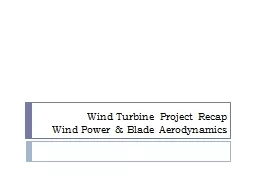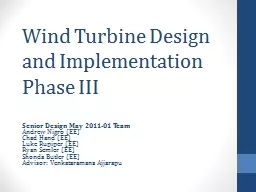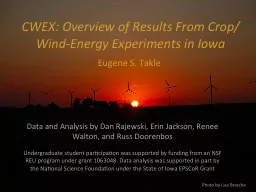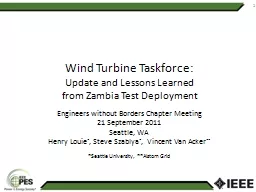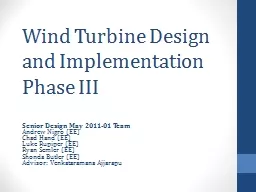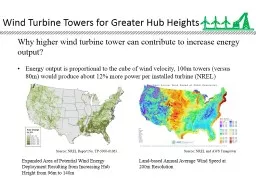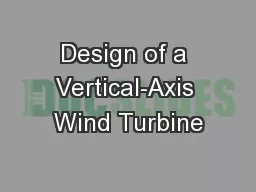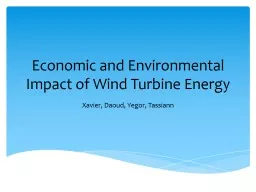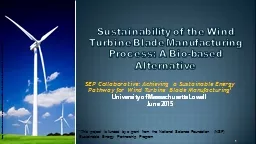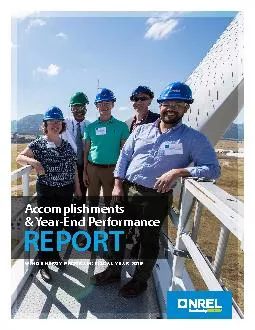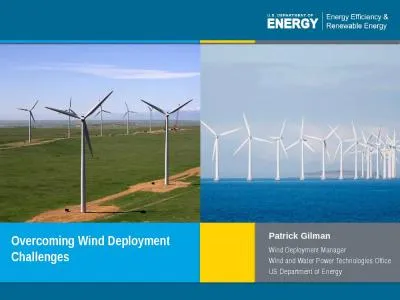PPT-Wind Turbine Project Recap
Author : min-jolicoeur | Published Date : 2019-03-17
Wind Power amp Blade Aerodynamics Wind Turbine Project Turbines tested indoors under controlled conditions A single metric for success amount of electricity generated
Presentation Embed Code
Download Presentation
Download Presentation The PPT/PDF document "Wind Turbine Project Recap" is the property of its rightful owner. Permission is granted to download and print the materials on this website for personal, non-commercial use only, and to display it on your personal computer provided you do not modify the materials and that you retain all copyright notices contained in the materials. By downloading content from our website, you accept the terms of this agreement.
Wind Turbine Project Recap: Transcript
Download Rules Of Document
"Wind Turbine Project Recap"The content belongs to its owner. You may download and print it for personal use, without modification, and keep all copyright notices. By downloading, you agree to these terms.
Related Documents

